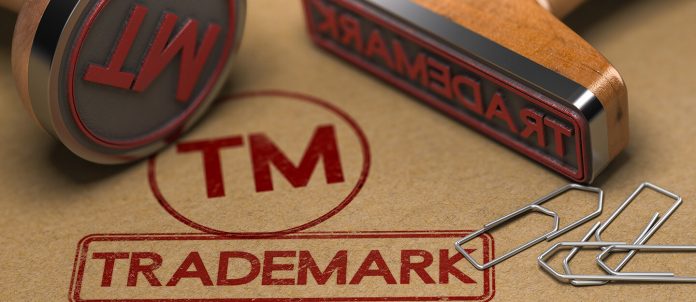This article is written by Ms. Somya Jain, from the Vivekananda Institute of Professional Studies. The article establishes a detailed study of the procedure and the requirements for renewing and restoring an expired trademark.
Table of Contents
Introduction
Trademarks have attained growing relevance in the present scenario as it protects one’s undertaking from potent damage. They serve as the essence of a company and should be protected by all means. As far as the definition of trademark is concerned, it is a sign which is capable of being distinguished from the goods and services of one enterprise from that of another. In addition to the standard trademarks like symbols, words, letters, numerals, drawings it also includes non-conventional trademarks like smell, taste, colour etc.
Considering the vast protection and usage rights granted only to the applicant through registering trademarks, the renewal of the same is substantial for the business. The limitation period of a registered trademark is 10 years after which it can be renewed indefinitely every 10 years. Prior to the completion of 10 years, the registrar provides a 6 months window to file for renewing the expired trademark. If the user fails to comply with the same, the trademark will be removed after publishing the notice in the concerned journal. Further, after the expiration period, the trademark is not immediately removed from the registers. Rather, the registrar gives a buffer period, starting from 6 months after the expiration of the trademark but within 1 year of expiry, to restore the trademark by filing an application for the same. The entire procedure has been enumerated under Rules 57-61 of the Trademark Rules 2017.
Trademark renewal and its importance
The standard period for a valid trademark is 10 years. If the owner of a trademark further wishes to continue acquiring the benefits of the registered trademark, then they have to renew their trademark by following the prescribed procedure. The trademark can be renewed indefinitely, that is to say, after the expiry of every 10 years the owner has the right to renew their respective trademarks. The trademark renewal can be done in two ways:
- You can apply renewal to change any sign or words in the already existing trademark; or
- You can apply for renewal without a change.
Trademark renewal provides certain benefits to the owner that forms the basis of the underlying purpose of trademarks. Some of the advantages are:
- As for any registered trademark, the renewal of a trademark extends the time limit for the protection of rights associated with trademarks. The owner enjoys the liberty to protect themselves from frivolous suits filed by the competing parties.
- The renewal of trademarks ensures continuous and unhindered protection of brand names of a variety of businesses from potential damage. Therefore, the renewal procedure acts as a shield to the brand value of the company.
- Through the renewal of trademarks, the owner becomes eligible to file for any prospective trademark infringement suits and claim the underlying remedies.
- Further, the registered trademark also provides an opportunity for the owner to earn profits. The owner has the right to assign the trademark license to someone else in return for some monetary consideration.
Requirements for renewal
For renewing a trademark, certain documents are to be submitted along with some filled forms. These are :
Documents
The following documents are required for renewing a trademark:
- A copy of the trademark registration certificate.
- Photo ID and the address proof of the applicant.
- Power of Attorney if the applicant is an authorised representative or an agent.
- Copy of application form of trademark registration (Form TM-A that was used for filing the original application for registering a trademark.)
Forms
For renewing a trademark along with the allotted fees the following forms must be provided.
| Form | Purpose | Cost(physical filing) | Cost(e Filing) |
| TM- R | Application form for renewal of a registered trademark to be used by the registered proprietor. | Rs. 10,000 | Rs,9000 |
| Application for renewal with a surcharge of registration of a Trademark after the expiration of the registered trademark but within a period of 6 months. | Rs. 5000+ Renewal fee | Rs. 4500+ Renewal fee | |
| TM-18 | Affidavit in support of the statement of the case. | – | – |
Form TM-R and Form TM-18 can be accessed from the given links.
Duration for renewing the trademark
The trademark authority has been considerate enough to provide multiple opportunities to file for the renewal of trademarks. The duration of filing for renewing the trademark can be divided into three parts. These include:
- The renewal can be filed within one year prior to the date of the expiry as per Rules 57 and 58 in Trademark Rules 2017.
- The renewal can be filed within six months prior to the date of expiry as per Rules 63 and 64 in Trademark Rules 2002.
- The renewal can also be filed within six months after the date of expiry of the registered trademark.
Procedure to be followed for renewal
In order to renew the expiring trademark, either the owner or on their behalf an authorised agent can perform all the necessary steps enumerated in the procedure below:
Filing of application
- Firstly, the owner or the authorised agent has to file the application form TM-R along with the relevant documents as mentioned above and the prescribed fees. The detailed procedure for filling TM-R Form can be accessed from here.
- If the owner files the application in the buffer period of 6 months after the expiration of the trademark, then along with the renewal official fees, additional fees of surcharge has to be paid as discussed above.
- The filing should be started 6 months prior to the expiration date as it takes months for the renewal process to complete.
- However, 1-3 months prior to the expiration date, the trademark registrar has to mandatorily send RG – 3 notice to inform the proprietor about the approaching date of expiration. The said notice is essential and if not sent by the trademark office, the registrar will have no right to strike off the expired trademark from the registers.
Status check of the application
- After filing the application form, the owner is expected to keep a check on the status of the application from time to time as there are various time-bound actions that are to be performed by the applicant from the registry of the trademark.
- The continuous process of the status check has to be observed until the registry is through with the process of application including the formality checking of the quality of the application along with other examinations.
Advertisement in the Trademark Journal
- Once the trademark registrar has completed the process of examination of the application and has accepted the same, the trademark will be then advertised in the Trademark Journal, which is an Official Gazette which states the acceptance and the objectionable trademarks.
- An opportunity is also given to the third party, that is the public, to file any objections underlying the trademark. After the lapse of the prescribed period, if no objections are raised, the trademark will be entered into the register of trademarks.
- If a trademark is published in the register, it indicates the renewal of the trademark for another period of 10 years.
Consequences of failure to renew the trademark
- The consequences of failure to renew the trademark are adverse in nature. If the proprietor fails to file an application within the prescribed time or pay the requisite fees, the registrar is empowered to remove the trademark from the register.
- The above condition shall only be practised if prior notice has been served by the registrar by way of advertising the notice, indicating the intention to remove the trademark from the register, in the Trademark Journal.
- When the trademark is removed from the register, the owner loses all the rights associated with the same. The right to file for infringement and protecting the brand from competing businesses would be negated from the purview of rights held by the owner.
- However, the trademark office has been considerate enough to provide another chance by way of restoration. If the owner fails to renew the trademark even within 6 months of the expiration of the trademark, then after 6 months but within 1 year of the expiration of the trademark the owner has the liberty to file for restoration of the trademark.
Trademark restoration and its importance
The concept of restoration has been enumerated under Section 25(4) of the Trademark Act 1999. It states that if after the lapse of the prescribed period for renewing a trademark the owner wishes to restore the same, then he can file a restoration application after 6 months but within 1 year of the lapse of the expiration period.
Restoration of the trademark provides another window of opportunity to the proprietor. If the owner fails to renew their trademark, restoration is yet another shot provided by the registry of the trademark. Therefore, it is undertaken after the owner fails to renew the trademark.
The restoration of trademarks provides protection for another 10 years, similar to that of the renewal of trademarks. In addition to the process of restoration, the registrar must ensure to assess the interest of all the affected parties.
Requirements for trademark restoration
Similar to that of renewal requirements, the restoration of the trademark also prescribes certain documents and an application form that is to be filed along with it.
Documents
The following documents are required for restoring a trademark:
- A copy of the trademark registration certificate.
- Photo ID and the address proof of the applicant
- Power of Attorney if the applicant is an authorised representative or an agent
- Copy of application form of trademark registration (Form TM-A that was used for filing the original application for registering a trademark.)
- In addition to this, a statement should also be presented stating the reasons or grounds for failing to renew the trademark within the prescribed period.
Forms
For restoring a trademark along with the allotted fees the following forms must be provided.
| Form | Purpose | Cost(physical filing) | Cost(e Filing) |
| TM- R | Application form for renewal/ restoration and renewal of a trademark | Rs. 10,000 + Renewal fee | Rs,9000 + Renewal fee |
| TM-18 | Affidavit in support of the statement of the case | – | – |
Procedure to be followed for the restoration
In order to restore the expired trademark, either the owner or on his behalf an authorised agent can perform all the necessary steps enumerated in the procedure below:
Filing of application
- Firstly, the owner or the authorised agent has to file the application form TM-R along with the relevant documents as mentioned above and the prescribed fees.
- The application has to be filed with a statement expressing the reasons for failure to renew the expired/ expiring trademark.
- The filing for restoration should take place after 6 months from the expiration date but within the period of 1 year from the said date.
Status check of the application
- After filing the application form, the owner is expected to keep a check on the status of the application from time to time as there are various time-bound actions that are to be performed by the applicant from the registry of the trademark.
- The continuous process of the status check has to be observed until the registry is through with the process of application including the formality checking of the quality of the application along with other examinations.
Advertisement in the Trademark Journal.
- While examining the application of restoration, the registrar should consider the interest of other affected persons.
- Once the trademark registrar has completed the process of examination of the application and has accepted the same, the trademark will be then advertised in the Trademark Journal, which is an Official Gazette which states the acceptance and the objectionable trademarks.
- An opportunity is also given to the third party, that is the public, to file any objections underlying the trademark. After the lapse of the prescribed period, if no objections are raised, the trademark will be entered into the register of trademarks.
- If a trademark is published in the register, it indicates the restoration of the trademark for another period of 10 years.
Consequences of failure to restore the trademark
- Restoring the trademark was the last opportunity provided to the proprietor and no other window was given by the registry of the trademark. The consequences of failure to restore the trademark are adverse in nature. If the proprietor fails to file the restoration application within the prescribed time or pay the requisite fees, the registrar shall mandatorily remove the trademark from the register.
- The above condition shall only be practised if prior notice has been served by the registrar by way of advertising the notice, indicating the intention to remove the trademark from the register, in the Trademark Journal.
- When the trademark is removed from the register, the owner loses all the rights associated with the same. The right to file for infringement and protecting the brand from competing businesses would be negated from the purview of rights held by the owner.
Conclusion
One of the emerging fields in Intellectual Property Rights is that of trademarks. The tendency of a symbol or a word belonging to a business to be distinguished from other undertakings is what stipulates the role of a trademark. The registration of a trademark ensures that the brand of the owner is protected from all the potent damages. Therefore, it is advised to renew and restore the trademark when needed. A trademark is valid only for a limited period of 10 years. The proprietor, if interested, can renew the same indefinitely for subsequent periods. The trademark registry has been liberal enough to provide multiple opportunities for the same. Even if the owner fails to renew the trademark, he can file for restoration. Thus, the owner should avail such benefits provided by the registry and protect their brands indefinitely from prospective infringements.
References
- Trademark Renewal Certificate | Documents Required to Reissue Trademark (indiafilings.com)
- Trademark Renewal (cleartax.in)
- Trademark Renewal and Restoration in India – Corpbiz
- Renewal and Restoration of Trademark Registration in India – Selvam & Selvam (selvams.com)
- Trademark Renewal In India – Intellectual Property – India (mondaq.com)
- Trademark Restoration Process India – S.S. Rana & Co. (ssrana.in)
- Things You Must Know All About Trademark Restoration in India | Swarit (swaritadvisors.com)
Students of Lawsikho courses regularly produce writing assignments and work on practical exercises as a part of their coursework and develop themselves in real-life practical skills.
LawSikho has created a telegram group for exchanging legal knowledge, referrals, and various opportunities. You can click on this link and join:
https://t.me/joinchat/J_0YrBa4IBSHdpuTfQO_sA
Follow us on Instagram and subscribe to our YouTube channel for more amazing legal content.












